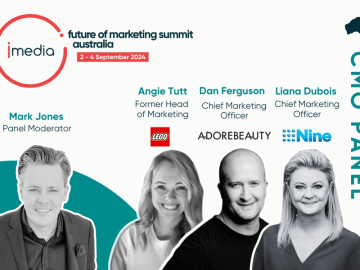There are countless ways to address this question. The conventional definition of a brand is “a relationship based on a guarantee you can trust.”
Another take, according to Ashley Friedlein of Econsultancy, is that brand “is the sum total of how someone perceives a particular organization. Branding is about shaping that perception.” Jeff Bezos, clever wag, defines brand as “what other people say about you when you’re not in the room.”
These definitions are correct, so far as they go, but fail to identify a brand’s true power: that it is magic. Nine, luminous elements comprise the brand, whose individual articulations, singly and in integration, give each and every brand their singular distinction. Like Muses, these nine elements serve to inspire, enchant and engage as they render the brand vivid, intense and alive: a “thing with feathers,” inherently promising, unique, optimistic, spreading hope. Like fire in the fennel stalk, however, and poised to be unleashed, these nine elements demand intelligent, empathetic stewardship in order to deliver on their far-reaching promises; alone and untended, they are of little value. Brand is needy. Spotlight on you, CMO! Imagine you and your brand, like a rider and horse in dressage, inseparable, creating your own magic: harmony, control and power in action that is consequent, transformative, and exhilarating to behold; thrilling.
Intrigued? Up for it? Here we go.
Brand: An encomium
Brand is your chance, CMO, to touch the beautiful in your work. Brand offers grace, privilege, and specialness that nothing else you do in your daily work remotely comes close to. Brand should have the effect on you, your organization, your customers and markets, that art has on beholders.
Stealing openly from Walter Pater’s aesthetics, we firmly believe a brand, your brand, should rouse, startle and shape new thinking, attitudes and behaviors. It should ignite your enterprise internally with the power of your ethos and courage. It should stir new external audiences to sharper, more eager engagement because of your convictions. It should help shape the markets and cultures you operate in and make a statement about the human potential you impact.
The Brand Octagon
Far more than a logo or graphic identity, a brand is the enterprise itself, its culture, its strategies, the focus of its future and a key driver of its success. It captures not just two or three elements, but nine: all are intangible, and all are continual sources of undeniable richness, abundance and renewal. Taking the form of a Brand Octagon, a brand encompasses:
- Vision: What impact do you want to have on your customers, your markets, your world? What is your deeply held quest? What North Star guides you forward? Where do you want to be in three to five — even 10 years?
- Mission: Highly correlated with Vision, why does everyone come to work every day? What does each person need to do to help make the Vision a reality? To what is each person truly accountable?
- Core values: What is your ethos? What are your unshakable beliefs? What do you hold so dear and true that you will put all the force of your courage behind it? What defines how you will interact with one another, your partners and customers?
- Total offering: ”If it does what it says on the tin,” in one, maximum two sentences, what will anyone knocking on your door get in return? Hand on heart, can everyone in the organization articulate exactly what you do and offer?
- Promises: What do you guarantee your audiences? Why should they believe you? What messages (three to five) do you need to convey, reinforced over time, to ensure your audiences know, and can fully acknowledge, your worth? What is your brand story?
- Personality: Every enterprise has one. As if a person, who are you and who do you aspire to be? What profile, or archetype, best encapsulates your spirit, your aspirations, your values, your powers of empathy and emotional connection? Are you the best “match” and partner for your audiences that you can be?
- Target audiences: What insights drive them, current and potential, to you? What are their psychographic profiles? What are their goals, their motivations, their values? What rewards do they find in their continued connections to you? Are you fully based in their centricity and intimacy so that you keep them engaged and loyal?
- Name: Nomen est omen. Is your name clear, differentiating, easy to say and remember, uncomplicated and un-compromising across languages and cultures? You might be surprised how often name presents a difficulty.
- Positioning: What holds everything together at the center of your brand? What is your differentiation? Your reason for being? Is it exquisitely rendered and insight-based? As if an atom, or DNA or a byte, can you build your entire business out from it? Is it sufficiently strong to last over time? Does it speak to the soul of your customers? Does it immediately explain why anyone should care?
You’ve only just started:
Your brand can and should inform your whole business. Your brand, in fact, is your business.
Rich, robust, polyvalent and evergreen, the Brand Octagon is as deep and broad and nuanced a model for branding as we know; it was created for, and has been tried and tested over three decades, specifically among B2B companies. Far from a simple, unifying image, the Brand Octagon provides a dynamic platform to integrate the nine, individual brand elements into a total system; and it is from this total system that you are able to launch, build out and align your entire business. The Brand Octagon practically talks to you, providing guidance, direction, purpose and inspiration, and this is how it works. With your positioning held ever fast at the center, integrating, aligning and holding everything together, realize that the combination of:
- Vision, mission and positioning will be the basis of your business plan (red wedges).
- Target audiences, total offering and positioning will form the basis of your marketing plan (navy wedges).
- Promises, personality and positioning will give flight to your communication plan (sky blue wedges).
- Core values, name and positioning will inform your internal corporate culture (purple wedges).
It gets better:
Here are highlights of how the Brand Octagon, unique in scope and range, can and should touch, influence, inform, align, integrate and help energize your entire business:
Business planning
While business planning is, strictly-speaking, the responsibility of the CEO and the management team, your brand’s vision, mission and positioning -– your company’s quest, reason-for being, and source of employee accountability — provide the critical calls to action. Drivers of your brand, they should be able to rouse, startle and shape new thinking, attitudes and behaviors; they should ignite your enterprise internally with the power of your ethos and courage and stir new, external audiences to sharper, more eager engagement because of your convictions. Herein lies leadership, market presence, competitive differentiation, culture-shaping. Income and revenues, however critical, are results from the business planning, not the goals themselves. Not least, your CEO and management team are equally owners of the company’s vision, mission and positioning, they having been the first to sign off on them. Time to put this into practice.
Marketing planning
Brand is at the heart of marketing planning: Brand should help you to shape the markets and cultures you operate in and make a statement about the human potential you impact. It is all about your audiences. Which audiences prefer which products and services from the company’s total offering, and why? This is classic marketing turf, B2B and B2C, whose knowledge you have in a large part from insights and customer-centric profiling, e.g., from customer research and psychographics; and whose management you drive and support, along with sales, with materials and promotions. This turf, however, is becoming ever more crowded, as it is equally the playing field for tech (CRM, ABM) and data as well as the traditional playing fields for sales and for R&D.
No problems, only opportunities: this marks new roles, new frontiers, for the Brand Octagon, beginning with coordination and management of brand and data.
Brand and data: As if yin and yang, like intangible and tangible “twins,” brand and data both occupy the same turf, the marketing plan’s “navy-wedge” of target audiences, positioning and total offering. Both brand and data serve to uncover and own the same “assets,” insights and customer intimacy. Rare, however, is there any coordination of brand with data, although ideally, they should work hand-in-glove, as real BFFs, and this is where the Brand Octagon comes to the rescue.
Data collection and management is a big, emerging area, which according to survey after survey, is still fraught with growing pains (e.g., not enough skilled resources to capture, analyze and implement findings; tracking is unaligned with business, marketing objectives.) Brand has traditionally already captured insight-driven, customer-intimacy and centricity in audience profiles and segments, and so is poised to provide overall guidance for what you track, how and why. What the data reveals should then be fed back into the brand to create and sustain an ever-green, dynamic system. Greater alignment and clarity will begin to emerge, step by step, as customer-intimacy deepens.
Use your Brand Octagon as well to map out roles, responsibilities, and ownership of audience insights, intimacy and program developments; and to reinforce and maintain integration of functions and brand integrity.
Sales: brand and data also share the same turf, marketing’s “navy-wedges” of targets and total offering, with sales. Sales takes these elements directly to customers, marketing indirectly through many different channels. But the core elements and content and assets are exactly the same: customer insights and intimacy and the company’s differentiating positioning. Alignment and engagement with sales is never easy; there is so much “territory”, ego and thorny human nature involved between sales and marketing that 100 per cent successful partnership is rarely guaranteed. The Brand Octagon to the fore again: It literally brings everyone to the same page, immediately identifying the joint “territory”, ownership and overlap of turf; significantly, it can broker the dialogue about how it would be best to partner around the content and diverge – necessarily and happily– in the implementation; not least, it continues to ensure common, integrated messaging and brand integrity.
R&D: In any company, R&D is always high stakes, highly technical; necessarily tied to business planning, financial forecasting and executive and corporate decision-making. The Brand Octagon can offer key input into decisions: through target audience intimacy, segmentation and psychographic profiling, you can anticipate what your audiences will want and why. What your brand has captured about your customers – who they are as people, what goals, motivations and values drive them, what you can predict they want and need and prefer from your organization’s total offering– can be confirmed and refined by your data. Data can also help you quantify which customer types you should prioritize; to whom you should allocate your resources; how to plan for total portfolio management.
Given these multiple, cross-functional interactions, how valuable would be the branding and bias education activities we detail in Part II to ensure smooth, seamless exchanges and overall success!
Communications planning
Your communications plan – and the promises, personality and positioning it brings to life — is at the heart and soul of the Brand Octagon, and why we created it in the first place. (NB: the troika literally forms a creative brief embedded at the Brand Octagon’s center.) Everything you produce going forward — content, storytelling, copy-writing, a new graphic identity, corporate campaigns, product promotions – will be on-brand. Meaning, everything you and your agencies produce will need to reflect your Brand Octagon’s promises, personality and positioning. It is not promises or personality or positioning, it is all three, in a brace, always. In this way, your communications should stir all your audiences, new and potential, to sharper, more eager engagement because of your time-honored, well-acknowledged convictions.
Use the Octagon to inspire creativity and suggest content, and then refer back to the Octagon to ensure your work is fully aligned with the high-level directions it provides. This is especially important as AI makes new inroads into content-creation and can dangerously veer into creating “foreign” personalities and “hallucinated” promises. Equally use the Octagon as a teaching tool for new employees and for parameter-setting with your agencies to ensure they always reinforce your brand’s, your business’s, uniqueness and differentiation.
CX: Equally the offspring of marketing and communications, CX is a deeply creative endeavor. It must bring to life the customer experience in total alignment with your brand personality, your company’s positioning and your brand promises. It’s also another value of the “bridge-building” the Brand Octagon can effect between marketing and communications, related but not necessarily always integrated disciplines; and between brand and data, all working together in a powerful brace. Indeed, customer experience is a logical next step in the alignment of audiences with brand promises and brand personality via the Brand Octagon’s organizing, unifying brand positioning; and of brand and data across their common marketing (“navy-wedge”) territories of audiences and total offering.
As noted in reference to R&D, above, what your brand has captured about your customers – who they are as people, what goals, motivations and values drive them, what you can anticipate they want and need and prefer from your organization’s total offering– can be confirmed and refined by your data. Exactly what you offer as customer experiences are likely to differ by customer profiles and types, this is to be anticipated, although data can help you quantify which customer types and experiences you should prioritize, thus making the best uses of your resources. Curiously, the same input the Brand Octagon can offer to R&D is exactly what its value is to CX – but of course, both R&D and CX are types of company-specific, bespoke products/services. Interesting to juxtapose them in this way!
Corporate culture
Corporate culture is the result of core values, company name, and positioning, with great support from, and a hefty dollop of, Brand Personality. Your corporate culture should ignite your enterprise with the power of your ethos and courage. High scores for employee satisfaction, every CEO and management team’s dream, typically reveal the brand at work. People believe in and act in accordance with the company’s core values, the company’s ethos; but equally important are the company’s differentiating Positioning, a source of pride and identity, as well as the company’s vision and mission, which provide direction, clarity, and purpose. At the end of the day, these define what everyone in the company works for and what they’re accountable to.
HR and hiring: it should come as no surprise, you can and should hire to your brand’s personality and core values.
You have doubtless on occasion felt, CMO, that promoting your brand’s value to your organization can seem like shouting into the abyss. “Hellooooo….. is anyone listening? Does anyone get it? Does anyone in this tech-forward and data-driven age care?” In spite of well-documented, time-honored, multivalent reasons behind branding’s values, there remains a stubborn lack of “brand traction” in B2B. As we have discussed at length, this is due to “perfect storms” of confirmation bias, misunderstanding, fear of “intangibles”, infatuation with science, chemistry and “hardware,” convenient transpositions of cost/expense and value. Should you ever experience another such “shout-out into that abyss,” CMO, have your Brand Octagon to hand – think horse and rider — and let your colleagues look away or askance at their personal risk.





